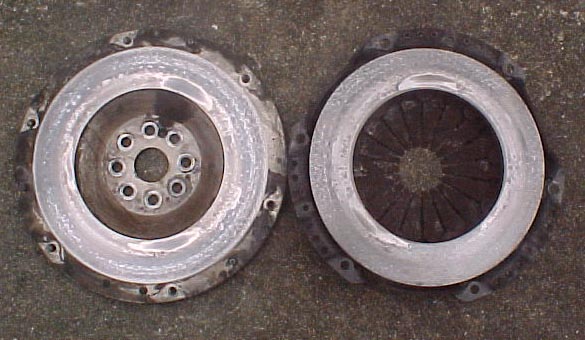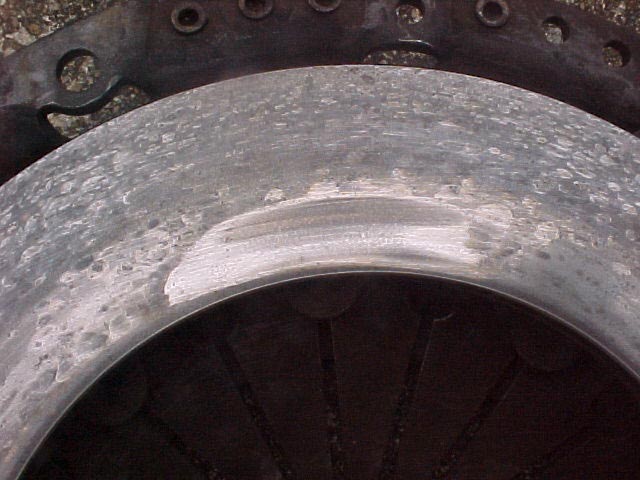
Why resurface the flywheel?

The discolored areas on the faces of the flywheel and pressure plate are primarily caused by "hot spotting". This clutch and flywheel, removed from my 94 Aero at 97 K miles, worked smoothly and very well. The hot spotting and uneven wear actually look worse than the parts that came out of my 91 turbo at 115 K miles, but that clutch was getting pretty irritating with its chattery operation. Bottom line is: The longer you run the parts, the worse the hot spotting gets and the worse the chatter gets. The parts may work fine, but if you've got the clutch out, it's best to replace the disc, pressure plate, slave cylinder and release bearing, and have the flywheel resurfaced. Resurfacing the flywheel is nothing more than a machine shop grinding a few thousandths of an inch from the face to expose clean, fresh, homogenous metal. Contrary to what some might tell you, pressure plate pressure remains unchanged because they pull out the clutch locating pins and remove metal from the entire face of the flywheel, then they reinstall the pins. The operating height of the pressure plate relative to the disc is unchanged, so there is absolutely no difference in clutch pressure or operation. The pressure plate cannot be resurfaced because there is no way to mount it on the lathe (not only that, but if you did remove material from the face of the pressure plate, the operating height would be changed and the pressure would be reduced). You replace the pressure plate not so much because it's pressure may have been reduced over time (not true, so far as I can tell), but because of the hot spotting. See the previous picture to see what a resurfaced flywheel looks like.
The picture below is a closer look
